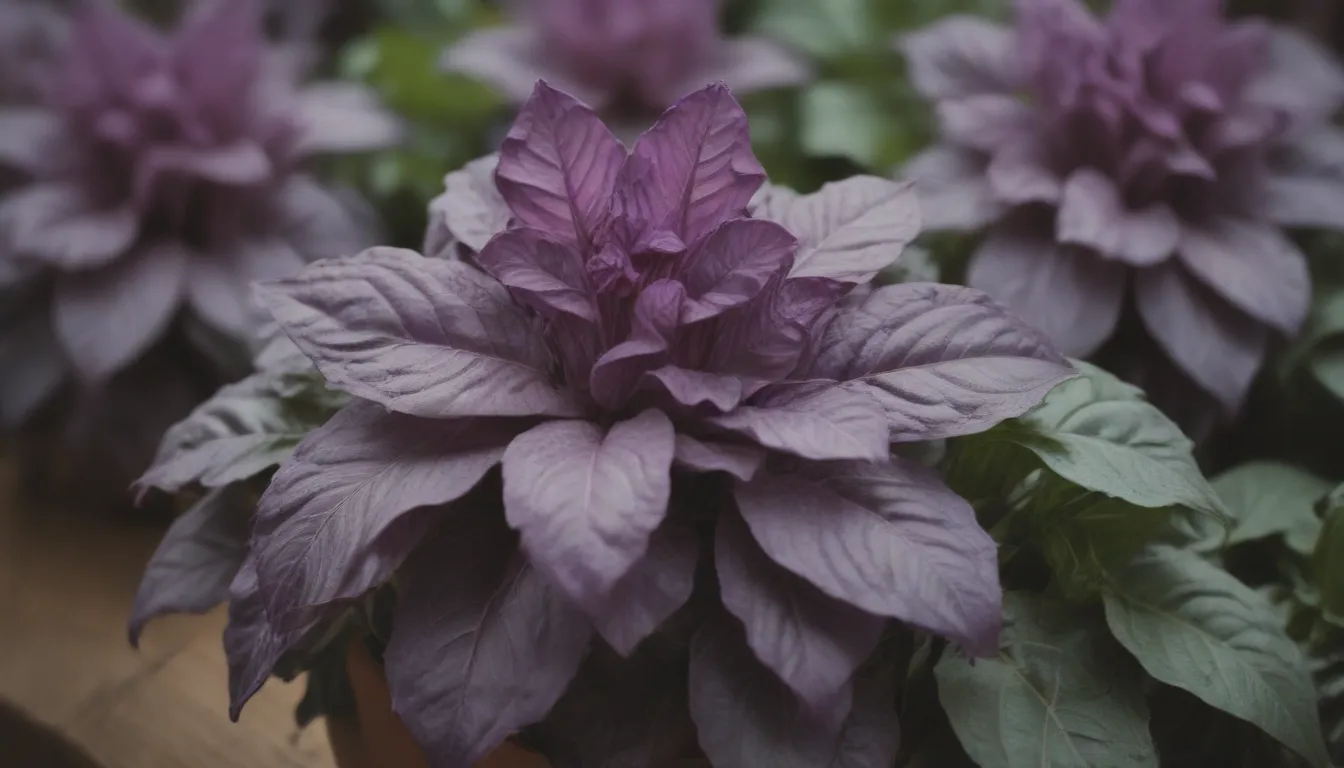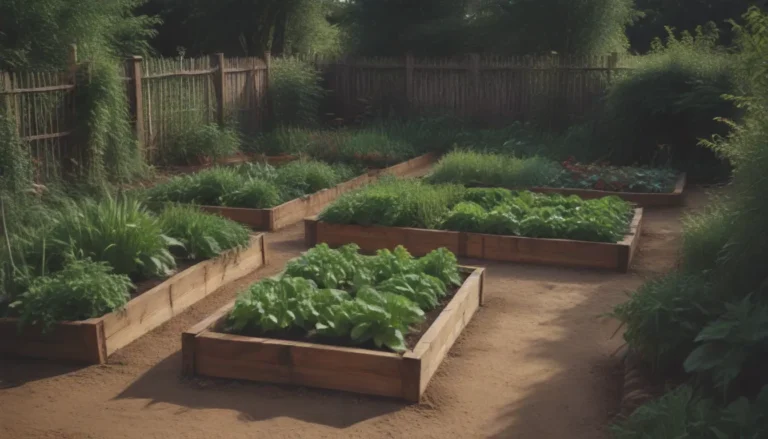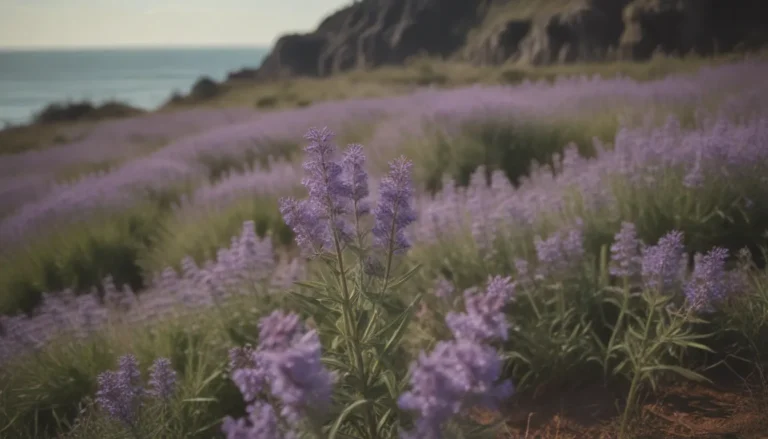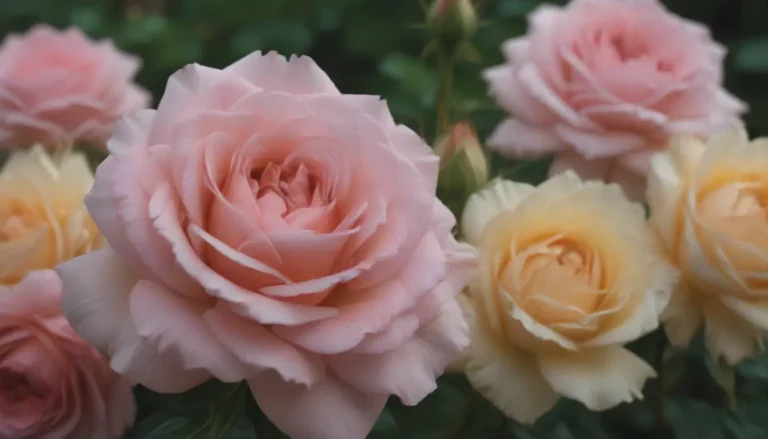The Ultimate Guide to Growing Purple Basil in Your Herb Garden

Have you ever considered adding a vibrant pop of color to your herb garden? Purple basil might just be the eye-catching addition you’re looking for! This striking variety of basil is not only beautiful but also adds a unique touch to your culinary creations. In this comprehensive guide, we will show you how to grow purple basil like a pro, from planting to harvesting. So, let’s dive in and explore the world of purple basil!
What Is Purple Basil?
Purple basil, a natural variation of green basil, is known for its stunning purple leaves. Unlike other basil varieties like Thai basil or cinnamon basil, purple basil doesn’t differ much in taste but rather in appearance. The colorful foliage of purple basil makes it a standout in any herb garden. Varieties of purple basil can range in color from light red to deep purple, thanks to extensive breeding efforts over the years.
When planting purple basil, it’s important to note that the desirable genetic traits of basil, such as leaf color, can be unstable and may vary even within the same seed packet. But don’t let that deter you! Embrace the uniqueness of each plant and enjoy the beauty it brings to your garden.
8 Varieties of Purple Basil
There are several varieties of purple basil to choose from, each with its own characteristics and aroma. Whether you prefer a compact plant or one with ruffled leaves, there’s a purple basil variety for everyone. Here are some popular options to consider:
- ‘Dark Opal’
- ‘Purple Ruffles’
- ‘Red Rubin’
- ‘Amethyst’
- ‘Prospera Red’
- ‘Deep Purple’
- ‘Purple Ball’
- ‘Rosie’
Each variety offers something unique, so feel free to experiment and find the one that suits your garden best.
How to Grow Purple Basil
Growing purple basil is relatively easy, especially if you already have experience with green basil. Whether you’re planting it in your garden or in pots, here are some essential tips to help your purple basil thrive:
Light
Purple basil thrives in full sun, so be sure to provide it with six to eight hours of sunlight each day. Adequate sunlight not only enhances the plant’s purple color but also promotes healthy growth and fewer disease issues.
Soil
Ensure that the soil for your purple basil is moist, rich, and well-draining. If your soil lacks these qualities, consider amending it with compost before planting. Organic matter not only provides nutrients but also helps retain soil moisture.
Water
Keep your purple basil well-watered at all times, as it is not drought-tolerant. Water the plant slowly but deeply whenever the top inch of soil feels dry. Using mulch around the base of the plant can help retain moisture.
Temperature and Humidity
Purple basil, like its green counterpart, thrives in warm temperatures. Wait until daytime temperatures are in the 70s and nighttime temperatures are above 50°F before planting. Basil is sensitive to cold, which can cause its leaves to turn black.
Fertilizer
Regular fertilization is essential for purple basil, especially if you plan to harvest it regularly. Use an organic slow-release vegetable fertilizer or a liquid organic fertilizer like fish emulsion. Be sure to follow the label directions for application frequency and amounts.
Harvesting
You can start harvesting basil leaves once the plants reach 6 to 8 inches in height. Remember to pick the leaves regularly to encourage new growth. When harvesting, always start from the top of the plant and work your way down. Don’t forget that the flowers of purple basil are edible too and can add a beautiful touch to your dishes.
Culinary Uses of Purple Basil
Purple basil is not just a feast for the eyes—it also offers a unique flavor profile that can enhance your culinary creations. With a taste similar to sweet green basil, purple basil adds a slightly spicy and intense aroma to dishes. Whether you’re using it as a garnish or infusing it into vinegar, purple basil can elevate your cooking to new heights.
In conclusion, purple basil is a versatile herb that adds both visual appeal and delicious flavor to your dishes. By following these tips for growing and caring for purple basil, you can enjoy a bountiful harvest of this beautiful herb. Experiment with different varieties, culinary uses, and growing techniques to make the most of your purple basil plants. Happy gardening and happy cooking!





